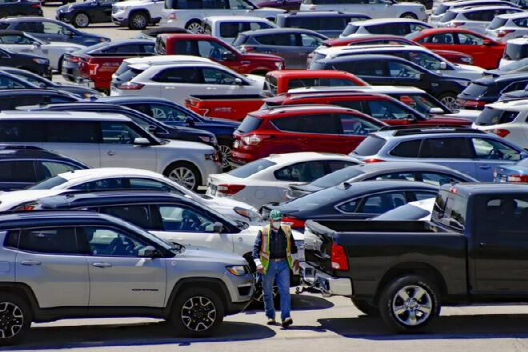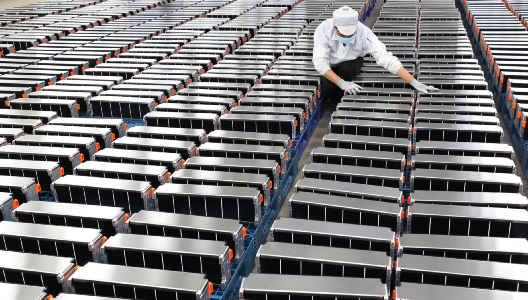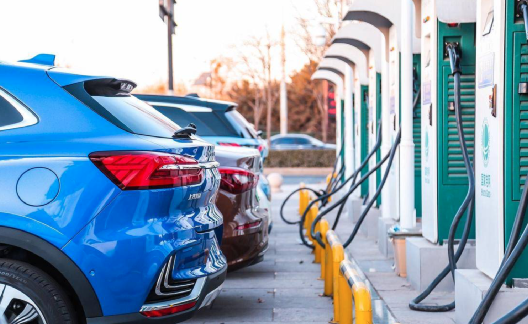Automotive Industry Suggestions Proposed at the Two Sessions
Author: Zheng Wen
Editor: Zhou Changxian
The automotive industry is the world’s largest industry, and the strength of the automotive industry serves as an indicator of a country’s manufacturing level. As China accelerates its transformation and upgrading of the automotive industry, and nurtures new advantages for industry development, the proposals and suggestions put forward by representatives and members of the CPPCC on the automotive industry are particularly important.
Direct Market Stimulus
Boosting sales will be the main theme for a long time to come, and policy benefits are the most direct way to stimulate the market.
The suggestion made by Feng Xingya, General Manager of Guangzhou Automobile Group, is the most direct. He calls for the government to continue implementing policies to subsidize new energy vehicle consumption. But instead of subsidizing businesses, the government should subsidize consumers, while also extending the exemption policy for automobile purchase taxes.
In the used car sector, the trading volume has reached 16 million vehicles by 2022. For this market, Feng Xingya has suggested that the government optimize the automobile restriction measures, promote the shift from purchase management to use management, speed up the maturity of the used car market, and improve systems for recycling and utilizing scrapped vehicles.
As a non-automotive industry person, Yao Jinbo, founder of 58.com, has also put forward proposals regarding the used car market. He believes that the relevant policy system is basically perfect. In order to consolidate the results of previous efforts, Yao Jinbo suggests that the government should establish a long-term policy of charging a 0.5% value-added tax on the sales of second-hand car dealers.

To enhance the convenience of used car transactions, set up motor vehicle registration service stations in used car trading markets and dealerships that meet certain criteria. Additionally, explore “online used car trading market” models. For internet-based dealerships that meet certain conditions, establish an online motor vehicle registration station, and implement the function of “online ownership transfer.”
Changan Automobile Chairman Zhu Huarong suggested that China’s mainstream fuel consumption tax policy for vehicles has not changed for many years and deviates from actual demand. He proposes that the consumption tax rate for cars with 2.0L or lower displacement should be cut in half. He also suggests merging the vehicle purchase tax and automobile consumption tax into one tax, and increasing the proportion of local finance retained.
The proposal put forward by Li Shufu, Chairman of Geely Automobiles, primarily focuses on commercial vehicles and the pickup truck market, with commercial vehicles mainly concerning the design of the “carbon credit” system.
In the commercial vehicle market, there are various types, the quality span is wide, and there are significant differences in the application scenarios of different types of commercial vehicles. Therefore, the “carbon credit” system should be designed targeted for different types of commercial vehicles. The implementation of the commercial vehicle carbon credit system should be carried out step by step and region by region.In addition, Li Shufu recognized the pain point of the current policies and regulations not matching the demand for the pickup truck market, and proposed relaxing the conditions for consumer use, ideally classifying pickup trucks as passenger cars with aligned inspection, scrappage, and holiday policies. For example, new energy pickup trucks should prioritize deregulation of road usage rights, be included in the “double points” category, and be managed with standard practices to better encourage enterprise upgrades and transformations. The “double points” strategy has been applied with success in the passenger car field and could be expanded accordingly.
Battery Safety and Industry Chain Layout
With the accelerated shift of industry transformation, the safety of the battery in new energy vehicles has become a top priority.
Ningde Times Chairman Zeng Yuqun proposed:
- To establish a battery energy storage system safety grading evaluation system based on the probability of failure, modeled on nuclear power standards, and incorporate this system into the bidding conditions of major projects, guiding the battery energy storage towards high-quality development benchmarked to “nuclear power standards.”
- To strengthen testing, evaluation, and certification for electrochemical energy storage systems, centered around the critical area of large capacity, high safety, and high reliability battery energy storage integrated systems, and establish a national-level electrochemical energy storage experimental verification platform.
- To strengthen the statistical publishing and sharing of battery energy storage data and open the national energy storage platform, classifying the data according to class and order, which can aid in the creation of more accurate safety warning models for energy storage power stations and provide data support for continual improvements in battery energy storage products.
Meanwhile, the energy storage authorities and supporting organizations will commission the Power Battery Alliance to publish monthly installed battery data for manufacturers, with credible domestic energy storage battery grid-connected total and manufacturer grid-connected data published regularly to provide key data references for equipment selection for power stations.
In addition, Zeng Yuqun suggested researching and designing China’s battery passport as a digital management tool for the full lifecycle management of the Chinese battery industry and speeding up the adoption of globally aligned accounting rules.
Zhongchuang Innovation Chairman Liu Jingyu focused on “orderly and high-quality development of the new energy lithium battery industry,” “establishing an efficient recycling system for power batteries,” “perfecting the power battery carbon management system,” and “innovating to break through overseas market carbon barriers” to provide suggestions and proposals.
Based on the current restrictions on the development of the lithium battery industry, which mainly include inadequate upstream resources and disorderly competition within the industry, Liu Jingyu suggests the following:
Strengthen the overall regulation and management of core mineral resources, especially lithium resources, by the state; propose relevant policies to further standardize industry upheaval and excessive consumption caused by unfair competition based on market advantages, and malicious litigation based on non-innovative patents; advise relevant departments to guide or establish a publicly owned technology platform in the industry and encourage support for power battery enterprises to build factories abroad.
In the field of power battery recycling, there are still issues such as unclear consumer direction resulting in retired power batteries flowing into informal channels, inadequate dismantling and recycling methods, and insufficient scaling leading to environmental hazards and economic value reduction. Liu Jingyu’s suggestions for this part are:
Plan the battery recycling system from the top down, led by power battery enterprises, starting from the product design source to establish an efficient battery recycling system; formulate standard specifications for the recycling process; prioritize supporting power battery enterprises with the ability to manage big data for the full life cycle of power batteries and who possess low-energy consumption and zero-pollution material recycling technologies to conduct industrial layout.
If battery suppliers care the most about the systemic establishment of power battery systems, then as the host factory, they would be concerned about battery cost issues.
At last year’s World Battery Industry Summit, chairman of GAC Group, Zeng Qinghong, remarked astonishingly: “Power batteries account for 60% of a car’s cost. Am I not working for Ningde Times?”
Zeng Qinghong believes that the power battery market is facing challenges in supply-demand balance; rising raw material prices and supply-demand tension have become the norm. The proportion of power battery costs in the total cost of automobiles is getting higher and higher. Except for Tesla, new energy vehicle manufacturers are all losing money. The difficulty in reducing battery costs is one of the important reasons why new energy companies cannot find sustainable development models.

Zhu Huarong’s suggestion is to introduce relevant policies domestically to encourage enterprises with technical and financial strengths to accelerate the exploration and development of high-quality lithium resources in the country; overseas, encourage and guide market entities such as domestic mineral resource enterprises, car manufacturers, power battery core enterprises, to conduct strategic layouts and development of lithium mines and other mineral resources overseas through various ways.In the field of renewable energy, Feng Xingya suggested accelerating the overall layout of national switchable battery promotion, researching and implementing various policies to support switchable battery models, incentivizing car companies to introduce switchable battery models and promoting vehicle-electricity separation policies. Additionally, after the national policy of exemption from new energy vehicle purchase tax is cancelled, he suggests the government should exempt the battery portion of switchable battery models when imposing purchase tax.
Improving Intelligent Legislation
The rapid development of China’s intelligent connected vehicle industry and accelerating autonomous driving technology trend have become very apparent. These trends have led Feng Xingya to propose five automobile-related suggestions, including the following related to intelligence:
First, he suggested increasing the application rate of domestic chips in intelligent vehicles. This would be achieved through policy guidance, promoting research and development, increasing policy incentives, and encouraging measures for research and development, application, consumer usage.
Second, he suggested incorporating legislation for autonomous driving vehicles into the next five-year legislative plan, establishing a specialized legislative working group as quickly as possible, and exploring the development of special legal frameworks for autonomous driving commercial operations. The aim is to officially acknowledge the legal status of autonomous driving vehicles at the regulatory level, defining rules for commercial operations, and improving various main player responsibilities.
Third, he proposed that the authorities moderately open up the permissions for collecting and utilizing the scenarios and geographic data for intelligent driving automobiles. For ordinary scenario data not involving national security, state secrets, car enterprises may collect within the scope of compliance, upon which the government can strengthen relevant supervision. He also suggests coordinating high-speed road and expressway testing environments and supports pilot cities to experiment early.
This year’s NPC representative, He XPeng, who has been elected for the first time as a representative for Xpeng Motors, shares similar suggestions, indicating that there are many shared problems.
He’s suggestions include: first, promoting and accelerating the legislative work related to intelligent connected vehicles and autonomous driving, second, explore establishing autonomous driving technology and insurance products systems, and third, push forward with city high-precision map review procedures by allowing centralised audit of incremental map updates, establishing online filing procedures, and allowing for source mode updates.
Xiaomi founder Lei Jun’s suggestions, on the other hand, focuses on data security. By establishing data security standards throughout the entire life cycle of automobiles, creating automobile data sharing mechanisms and platforms, regulating the use of vehicle data.In the future, automotive data will undoubtedly become one of the core competitiveness of Chinese automakers. Establishing high standards in data security protection will enable consumers to be more willing to share travel data with automakers.
Pilot cities promote domestic and international expansion
In China, Hainan is a pioneer in the development of new energy markets, taking the lead in proposing a timeline for the sale ban of fuel vehicles by 2030. In 2022, of the total of 162,000 new vehicles sold in Hainan province, 74,000 were new energy vehicles.
Jing Zhu, Chairman of Haima Group, stated that after years of development, Hainan now has the conditions to carry out the demonstration operation of hydrogen fuel cell passenger vehicles. He suggested:
Firstly, include Hainan in the fuel cell vehicle demonstration city cluster; secondly, increase policy and financial support to encourage local enterprises to actively participate in the research and development and manufacturing of the entire industry chain of hydrogen fuel cell vehicles; thirdly, under the government’s coordination, integrate social resources, and build five large-scale “Green Energy Centers” in the north, south, east, and west of Hainan. These centers integrate multiple functions, including green and electric charging and battery swapping, hydrogen refueling from clean power, as well as energy storage and peak shaving to create new industrial formats.

He Jinglin, Chairman of Macau Chamber of Commerce, believes that Macau should play a gateway role and promote the sales of mainland’s new energy vehicles to Portuguese-speaking countries through Macau.
“Guangdong Province has many new energy vehicle leading enterprises. Macau should cooperate with mainland car companies to sell products to Portuguese-speaking countries.” For example, through Portugal to Europe, through Brazil to South America, and through Angola to Africa.
He Jinglin’s suggestion provides a new idea for Chinese auto brands to go abroad.
Since 2021, the favorable situation of mass Chinese brand exports has been formed. In 2022, the export of passenger cars reached 2.529 million units for the whole year, a YoY increase of 56.7%. Among them, new energy vehicles performed brilliantly, with an export of 679,000 units, a YoY increase of 120%. Industry insiders believe that the next three to five years will be a historic time window for Chinese brand exports.
Zhang Xinghai, founder of Cyllis Group, also believes that developing national auto brands requires continued promotion of overseas strategies. Currently, domestic new energy vehicle exports face problems such as difficult certification, long export logistics cycles, and high prices.
He proposed that relevant authorities should provide policy guidance, facilitate vehicle companies in technology exchange and overseas exhibitions, and focus on solving the problem of “difficult certification”. In addition, he suggested opening up multiple ports for export, coordinating and solving prominent problems such as high export transportation costs and inadequate transportation capacity.# Translation in English Markdown
Chery Holding Group Chairman Yin Tongyue has made suggestions to strengthen strategic resource reserves, standardize industry charging standards, promote battery swapping models, and lower tariff barriers, accelerating the process of reducing automobile product tariffs.
In conclusion:
According to the “2021 China Manufacturing Power Development Index Report,” the development index of China’s manufacturing power in 2020 was 116.02, still lagging behind industrial powers such as the United States and Germany.
With the wave of global transformation and upgrading of the manufacturing industry, strategies such as “German Industry 4.0,” “American Industrial Internet,” and “Made in China 2025” are reminding us of the importance of seizing the advantage in the new round of manufacturing competition.
For China, automobile manufacturing enterprises play a pivotal role in this round of strategic competition.
From boosting the domestic market to going global, from tackling pain points in the new energy industry chain to improving intelligent development systems, the suggestions and proposals on the automobile industry presented during the two sessions are in line with the development path of China’s automobile industry.
It is a difficult but correct path, a path towards sustainable development.
This article is a translation by ChatGPT of a Chinese report from 42HOW. If you have any questions about it, please email bd@42how.com.
